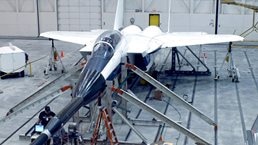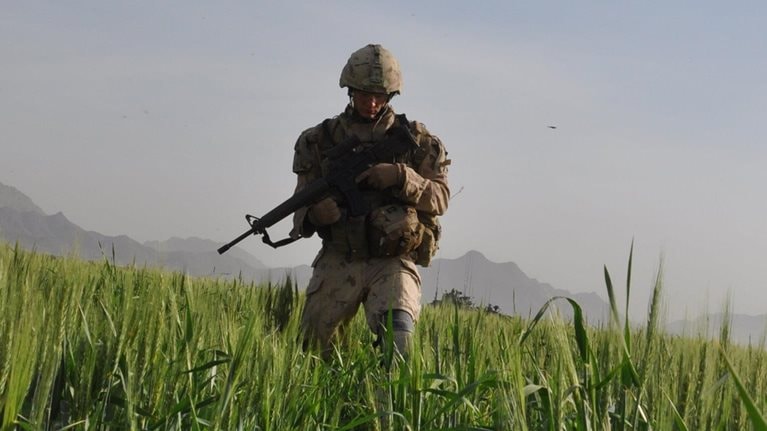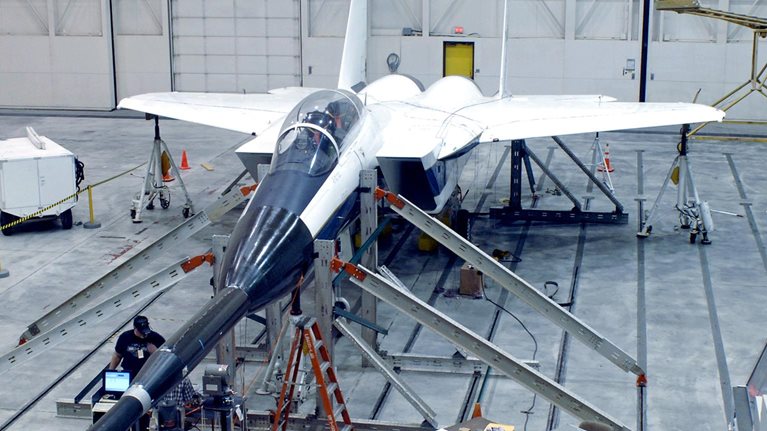Russia’s invasion of Ukraine in February 2022 prompted a significant reappraisal of defense and security in Europe and a review of long-standing assumptions that large-scale conflict on the continent was unlikely in the 21st century. Following humanitarian, economic, and military aid responses, multiple NATO and European countries announced plans to increase their defense budgets. Decisions are still to be made about the actual scale of the increase, as well as the areas that will receive most funding.
To assist industry stakeholders, including governments and companies that may supply critical products and services, we created a model to estimate how European defense budgets might evolve through 2026 and identified areas that might receive an influx of funds during this period. This model of potential spending scenarios could prove useful as European nations consider new strategies to ensure security, while making difficult choices on budgeting priorities.
A new outlook on European defense spending
The planned increase in European defense spending does not represent a reversal in long-term trends. Defense funding has been rising in recent years in many European countries, in part because of NATO calls for increased spending and NATO members’ commitment to that end, resulting in a compound annual growth rate of 6 percent between 2015 and 2021.1 But even with this growth, many countries did not follow NATO’s guideline that each nation should spend 2 percent of its GDP on defense—a target set in 2006.
With Russia’s invasion of Ukraine, many European nations have now committed to meeting or exceeding the NATO target—in some cases, years before they originally planned to do so. Take Germany, which announced in February 2022 that it would spend an additional €100 billion on defense. This is a major shift, considering that the country’s military spending, as a percentage of GDP, averaged 1.3 percent between 2008 and 2021.2 Other European NATO countries have announced similar plans. Poland, for example, set a defense budget of 2.4 percent of its GDP for 2022 and plans to increase it to 3 percent in 2023. The country may potentially add additional funding, which could bring the 2023 defense budget to above 4 percent of GDP.
Would you like to learn more about our Aerospace & Defense Practice?
Some countries outside the NATO fold have also reevaluated their security postures and relationship with the alliance. Austria is considering establishing a near-term, fixed GDP spending target for defense that would be higher than previous levels. This might entail a significant funding increase, as the country has had one of the lowest European defense budgets in terms of GDP percentage since the Cold War ended. Similarly, Sweden now plans to spend 2 percent of GDP on defense. It has also applied for NATO membership, as has Finland. These are watershed moments for Europe and for the alliance.
Greater spending—and tough decisions
Understanding the true scale of additional defense spending, as well as the areas to which it will be allocated, is important for multiple stakeholders. For European nations, a common understanding of country-specific funding decisions can help them optimize resources and capability investments in the shared pursuit of greater security. Within the defense industry, this knowledge can help companies focus on critical needs, efficiently allocate resources, and increase capacity to meet demand.
McKinsey recently analyzed current and projected European defense spending from 2021 through 2026. First, we modeled the spending trajectory that likely would have occurred if Russia had not invaded Ukraine. With a model based on publicly available data, we then modeled two spending scenarios that show how the war and other considerations might prompt nations to increase spending over this baseline. One scenario shows the highest potential increase, while the second shows the lowest.
According to our modeling, even if Russia had not heightened security concerns by invading Ukraine, European defense spending3 would have risen from €296 billion in 2021 to €337 billion in 2026—an increase of 14 percent. In our low scenario, which factors in the invasion’s impact on defense funding, spending increases by 53 percent over the same period to reach €453 billion. In the high scenario, which assumes a bold defense funding response, spending increases 65 percent from 2021 through 2026, reaching €488 billion (Exhibit 1).4

Greater funding commitments are intended to contribute to increased security. This will mean ensuring allocation to the right areas based on governments carefully deciding their investment priorities. However, given the potential volatility in available funds and purchasing power, combined with ever-increasing demands, proposed funding increases may not materialize.
Any spending increases are expected to occur progressively, rather than immediately. If inflation continues to rise, it could significantly reduce or even negate the impact of any planned spending increases. For example, McKinsey estimated in March 2022 that the US Department of Defense could lose some $480 billion in purchasing power over five years if the economy reentered a period of high inflation and low nominal top-line increases in the defense budget. For Europe, the cumulative loss of buying power could be close to €300 billion under a scenario where inflation averages 5 percent from 2022 to 2026; in a more conservative scenario, with inflation averaging 3 percent over this period, the cumulative loss of buying power would be about €185 billion.
Tough decisions might be necessary, as additional investment may be needed in multiple categories. To determine which areas stakeholders may decide to flag as priorities, we examined a few historic spending trends. As part of the “peace dividend” at the end of the Cold War, military equipment inventory decreased significantly, particularly in the areas of major capital platforms: main battle tanks (MBTs), combat aircraft, large-surface warships, and submarines (Exhibit 2). For example, the number of submarines went from 107 in 1992 to 57 in 2022 according to an analysis of selected European countries. In some categories, such as ammunition or armored vehicles, inventory supplies have been sent to support Ukrainian armed forces, decreasing their count among other European nations.

Although procuring new equipment will be an important part of defense ministry spending plans, defense leaders may also have another major concern: the availability of current equipment. In Italy, France, and Germany, for example, less than 50 percent of existing equipment is available in some major categories, such as helicopters, because of the need for maintenance and repairs (Exhibit 3). In some cases, availability is even below 40 percent. Although some equipment categories have higher availability rates, overall readiness is a persistent challenge and could benefit from more attention as spending increases. Beyond improving maintenance of the current fleet, nations might also acquire new platforms to increase readiness.

Getting the most for the money
European nations have stated goals to provide security as a common good and protect their citizens. To achieve this goal and spend their increased defense funding effectively, they might benefit from focusing on the following moves:
- Driving scale. Europe now has “oil in the machine” in terms of greater funding, but this alone will not deliver the continent’s defense policy goals. To drive down costs and help their funding go further, nations might want to ensure greater alignment and collaboration to gain scale. If they consider making joint orders for equipment, rather than individually ordering a multitude of different designs, the magnitude of the purchase might be enough to enjoy real economies of scale. It could also drive efficiencies in maintenance and sustainment for operating equipment, which usually has a long life cycle. As Europe operates more than five times as many weapons systems as the United States across certain categories, this would also help to reduce fragmentation and improve interoperability (Exhibit 4).

- Addressing inflation. Defense agencies are already feeling the impact of inflation as materials and other goods increase in price. As such, defense agencies would benefit by factoring inflation into their calculations, if they are not already doing so, to determine if their funding will have the desired impact.
- Accelerating innovation. Many nations may consider restocking and recapitalizing their fleets, and some have already announced equipment orders to accomplish this. This trend, combined with current inflation levels, may create a situation in which limited funding is available to invest in future technologies. If nations decide to focus on innovation, they might encourage robust collaboration between the defense and commercial sectors. And if they invest in areas in which R&D is relatively immature, they might later emerge as leaders in those industries. Despite inflation and the recent focus on restocking and recapitalizing fleets, a greater focus on innovation may now be more feasible because of the higher defense funding.
Together, these strategies may help European nations achieve their defense goals, even if inflation cuts into their buying power. They could also allow Europe to strengthen a defense industry that supplies many leading products and services.

Integrated profit management during inflation: Lessons for aerospace and defense
As nations drive scale and pursue innovation, choice and focus will be critical. Based on publicly acknowledged capability gaps and opportunities, there are four areas of focus emerging from which European nations may benefit from strategic investment:
- Defense capacity and stockpiles: stocking ammunition to levels in line with NATO guidelines; upgrading or maintaining existing platforms and armor; strengthening protected mobility, airlift, and naval platforms; and enhancing electronic warfare capabilities
- Enhanced capabilities: new/enhanced air and missile defense and artillery; fifth- and sixth-generation combat aircraft; and unmanned systems
- New defense technologies: strengthening digital command, control, and communications; supporting multidomain integration of systems (digitally enhanced and cyber protected); supporting cybersecurity and state-of-the-art intelligence/surveillance/reconnaissance (ISR) assets
- People: retaining and recruiting highly trained military talent, including additional staff with technical expertise, to confront new challenges, such as those in the digital domain; ensuring adequate staff to operate the additional influx of equipment and capability
Better coordination across Europe
Although many European nations may want to field new equipment rapidly, this will be possible only if industry and defense procurement ministries or agencies can meet demand. Supply chain disruptions, which have been exacerbated by the COVID-19 pandemic and the invasion of Ukraine, are a major issue and could likely slow production and maintenance. Many businesses have encountered difficulties in quickly sourcing some materials and electronic components, including titanium and semiconductors, which are also needed for defense procurement.
Some defense companies may want to explore how to increase capacity by opening new production lines, accelerating new development programs, and enhancing shop-floor productivity. These steps may not be easy, however, due to several factors:
- Defense demand had been falling over the past decades, and companies have scaled down their production capabilities in response.
- Workforce shortages have increased post-COVID-19, and new working preferences may hinder work on the production line.
- The defense industry is facing additional challenges in attracting, training, and retaining skilled workers in light of demographic factors, such as an aging workforce population at many businesses within the sector.
- Some companies may lack the hangar, depot, or yard space required to increase production of platforms and spare parts.
To overcome obstacles related to procuring new equipment or increasing availability through enhanced maintenance, multinational efforts could be critical. By considering co-created and co-owned solutions, European countries could maximize financial efficiencies. There are already precedents for defense collaboration launched within the past five years in Europe, including the EU’s Permanent Structured Cooperation Framework and the European Defence Fund, among others.
Beyond EU initiatives, there are positive examples of international collaboration. For instance, the US/European Strategic Airlift Capability5 has enabled the pooling and sharing of expensive defense assets and helped European countries, including nations with smaller defense capabilities, enhance their security. Within NATO, members have volunteered national contributions to shared alliance assets, such as those related to ballistic-missile defense, to further NATO’s integrated air and missile defense capabilities.
Collaboration might involve making joint purchases of defense equipment in the short term or working together on new designs in the medium to longer term. In addition to reducing costs, such projects might help nations avoid duplicative development efforts and decrease the fragmentation that occurs when countries have multiple through-life support infrastructures that lack interoperability. Collaboration may also help relieve some pressure on the industry to produce duplicative assets and allow countries to divide and conquer on capabilities they target for investment, creating the possibility for accelerated time to field. Some examples of successful cross-Europe collaborations already exist, such as those related to the A400M transport plane or the Eurofighter combat aircraft. Other transatlantic or foreign efforts have also shown the benefits of collaborating on new capabilities, including those related to the F-35 Joint Strike Fighter and K9 self-propelled howitzers.
Collaboration also enables interoperability to be baked into the requirements, as multinational efforts require systems to be interoperable across nations and services. The benefits, in terms of less fragmentation, could be significant. Collaborations may also enable shared sustainment capabilities across the continent, as the F-35 or the Leopard 2 MBT sustainment cooperation already do, and the Future Combat Air System, Future Air Defense System, and Future Cruise/Anti-Ship Weapon multinational capabilities may potentially do.
To enable more effective collaborations, countries may benefit from improving their acquisition and maintenance processes, as well as from revisiting their risk and approval methodologies. Prior and ongoing bilateral and multinational acquisition programs have been stymied by delays, cost overruns, and challenges, as multiple countries, ministries/services, and industry counterparts must set and harmonize requirements and give approvals. Streamlining and maximizing acquisition processes may require strong commitment from decision makers, but it will help nations deliver programs in a time frame that supports deterrence. The expanded use of digital solutions can also help accelerate time lines within collaborations.
The Russian invasion of Ukraine has led NATO and other European nations to recalibrate their plans to maintain defense and security in Europe. Although the pan-European increase in defense spending can enable long-needed enhancements in capabilities, these potential gains could be hindered by ongoing inflationary pressures, challenges in coordinating European capabilities, and interoperability issues.
Through existing frameworks and initiatives, European nations may decide to coordinate defense procurement more strategically to increase their strategic autonomy. While the war in Ukraine has created humanitarian challenges and economic headwinds that will remain for years to come, Europe’s defense spending could enable the continent to strengthen its defense capabilities and industrial competitiveness. More important, it could help support peace through deterrence and readiness.


